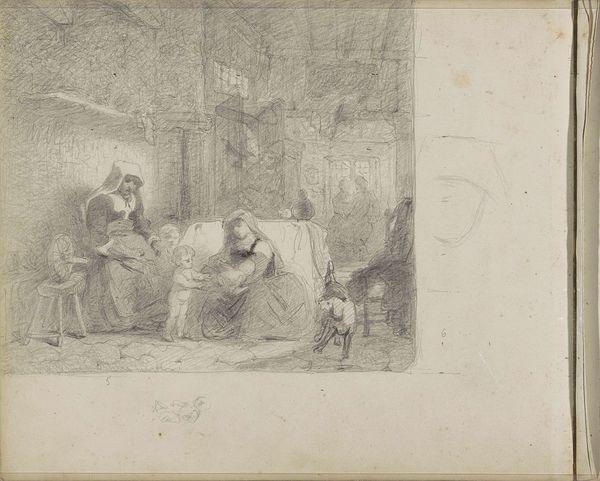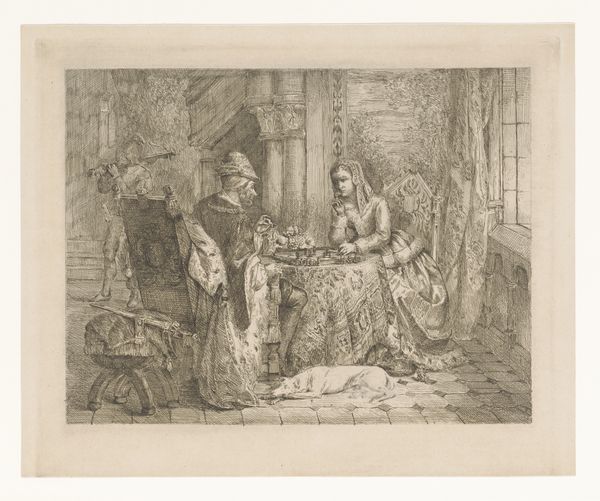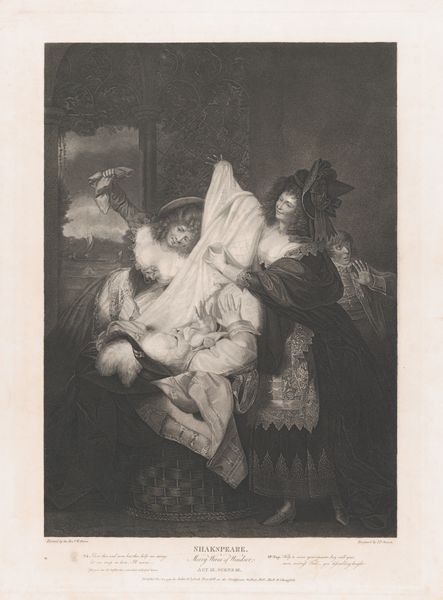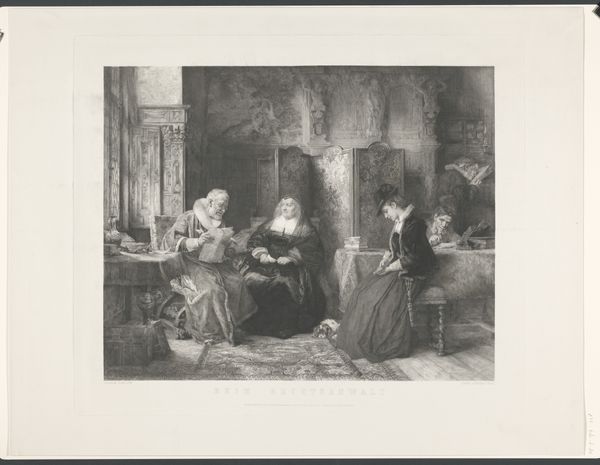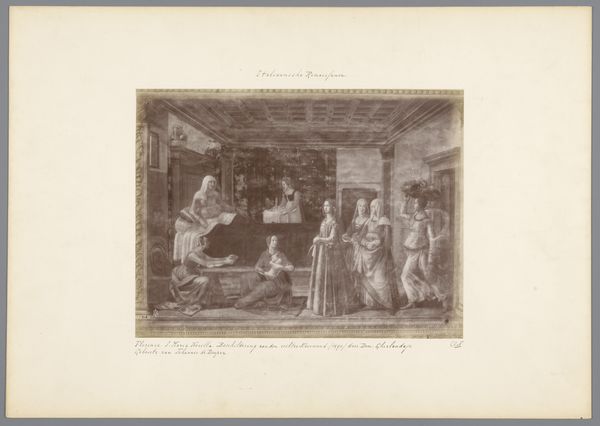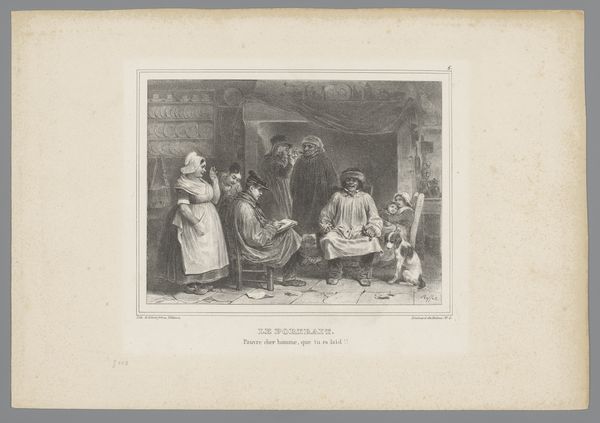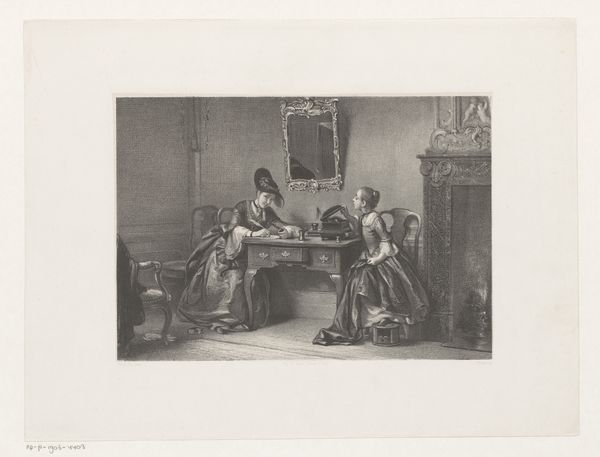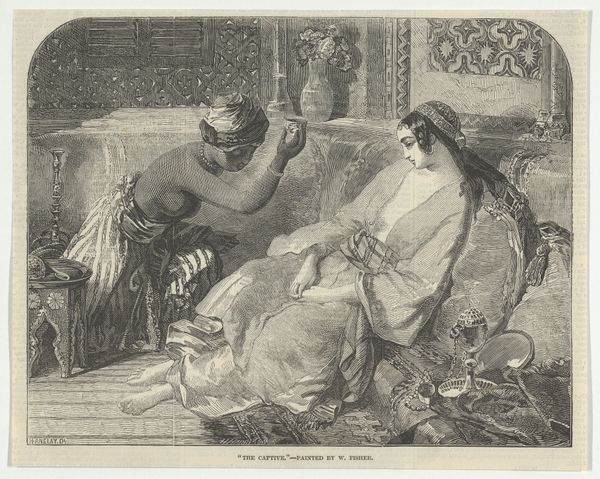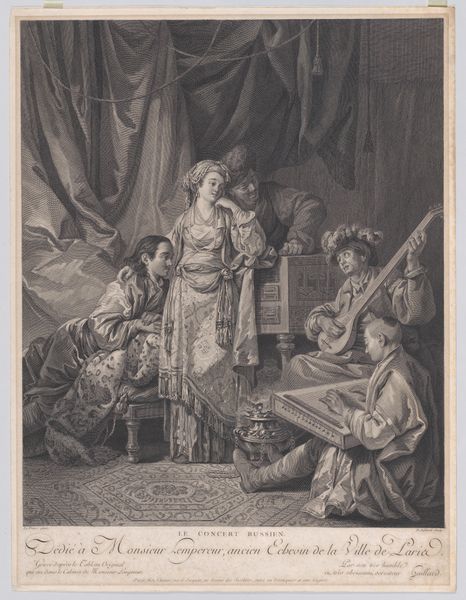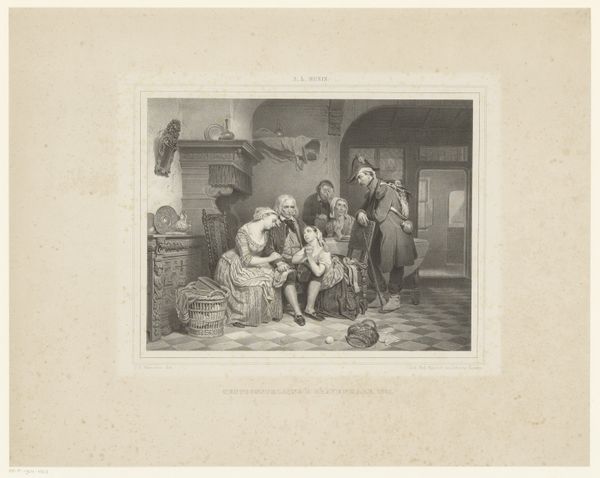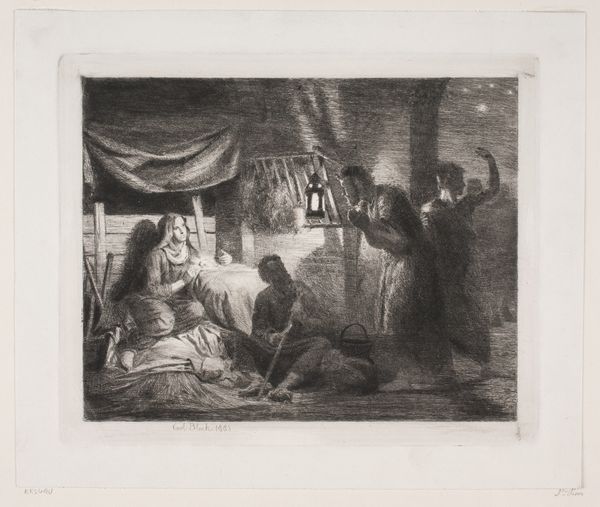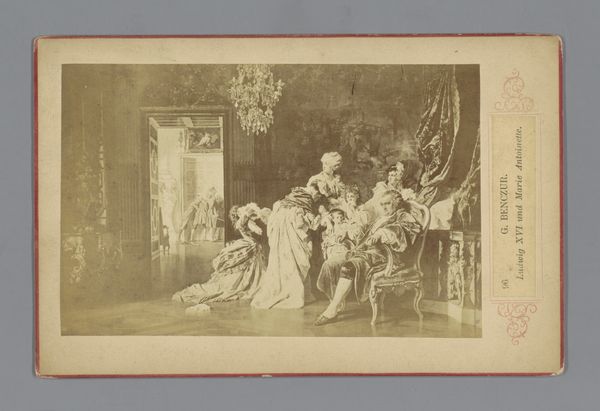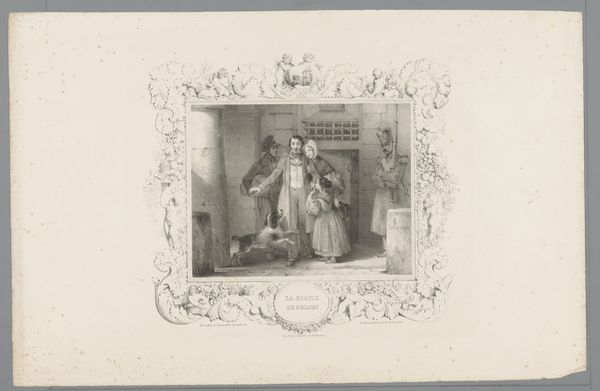
Fotoreproductie van een schilderij, voorstellende Assepoester met haar stiefmoeder en stiefzussen c. 1875 - 1890
0:00
0:00
print, photography, gelatin-silver-print
# print
#
photography
#
gelatin-silver-print
#
19th century
#
genre-painting
Dimensions: height 98 mm, width 133 mm
Copyright: Rijks Museum: Open Domain
Editor: This is a photograph, a gelatin silver print from between 1875 and 1890, by Gustav Schauer, titled "Fotoreproductie van een schilderij, voorstellende Assepoester met haar stiefmoeder en stiefzussen." It depicts Cinderella with her stepmother and stepsisters. The composition feels very stage-like and posed, highlighting the dynamic of Cinderella versus her family. How do you interpret this work? Curator: I see this not just as an illustration of a fairytale, but as a powerful visual commentary on societal roles and oppression, especially towards women. This photograph, produced within a very specific historical context, acts as a reflection of 19th-century domestic power dynamics. Think about Cinderella's forced domesticity versus the stepsisters preparing for the ball and consider who benefits from maintaining that social order? What elements in the image underscore those inequalities? Editor: Well, Cinderella is in very drab clothing, almost blending into the background, while the others are much more richly dressed and are presented with more attention to detail. They're actively going out and she’s confined to the domestic space. Curator: Exactly. The setting, although a “domestic” interior, further emphasizes the socioeconomic stratification – even if they all occupy the same home. How does this image speak to larger conversations about gender, labor, and social mobility of that era, and does it have resonance today? Editor: It makes you think about how even something as simple as access to certain social circles can change someone's life. It also makes me think about labor exploitation. Curator: Yes, the piece encourages us to consider historical perspectives. What could a contemporary artist do with this subject to emphasize issues still unresolved today? Editor: I never thought of it like that before – the staged feel highlights that real struggle hasn't faded away as much as I would hope. Thanks for pointing that out. Curator: The pleasure is all mine. Seeing art as a point of connection between past and present is an endeavor for all of us.
Comments
No comments
Be the first to comment and join the conversation on the ultimate creative platform.
